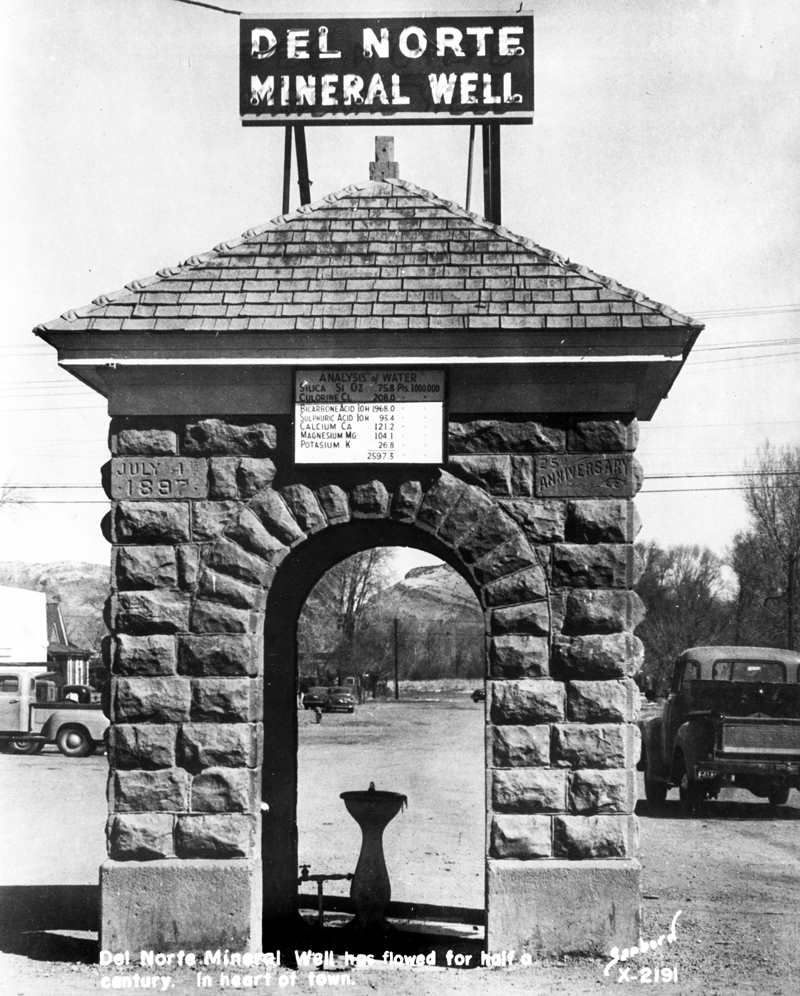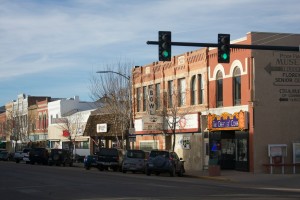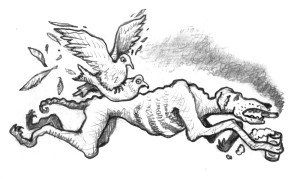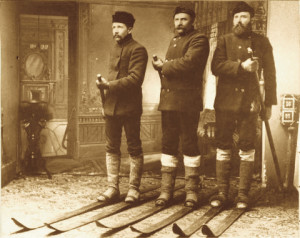By Tyler Grimes
Del Norte, Colorado, sits in the southwest corner of the San Luis Valley along the Rio Grande River, just east of the Rio Grande National Forest and San Juan mountains, south of Penitente Canyon and between Monte Vista and South Fork on Hwy. 160. Like many small mountain towns in Colorado, Del Norte has a rich Native American history, a mining boom the town was built on, an extensive ranching past and present, a population and economic downturn in the mid-1900s, and is now slowly growing, thanks to tourism. But it’s Del Norte’s unique individuals, families and businesses that give it a charm of its own.
Louise Colville, whose family history is inseparable from Del Norte’s, met me at her husband’s art gallery to show and tell some of her hometown’s history. The gallery is located in a large two-story building in Del Norte’s small downtown with “Casa de Madera” painted on the outside; it’s been standing since 1876, said Colville. The building even survived the fire of 1877 that destroyed most of the town that had been built up to that point. Colville guided me through The Rio Grande County Museum, where she is currently the director.
[InContentAdTwo]
The area was once summer ground for the Ute, Kiowa, Navajo and Comanche Native American tribes. Native petroglyphs can still be seen in caves southeast of Del Norte. According to Colville, the Utes were probably the most prominent, while the Navajo passed through on their way to visit their sacred mountain of the East, now Mount Blanca.
In 1852 the land where Del Norte now resides was part of unestablished Mexican land, and by 1859 the original settlement was built. The Old Spanish Trail, which linked Santa Fe and Los Angeles, made Del Norte a good stopping point on the trade route. Mexican settlers, like the indigenous people before them, came only for the summer and moved south with the changing of seasons.

The Kit Carson Treaty of 1868 sought to remove all Utes from the area to make it safe for mining. The treaty provoked violence, most notably the Meeker Massacre, with Utes defending their right to the land. At that time, Colville said, the Utes were portrayed as mean and nasty aggressors, though they were on the defensive.
The 1870s brought mining and ensuing rail lines to Del Norte, and with it the biggest boom ever to come to the small town. At one time, Colville explained, there were more than 200 businesses in West Del Norte, with a downtown filled with saloons, shops, dance halls and an opera house. It was in 1873 that Colville’s great-great-grandfather came to Del Norte to mine; he was part of a Swedish community that moved to the area together. The town was officially incorporated in 1872 as part of Conejos County, though it is now the county seat of Rio Grande County.
The Windsor Hotel was a main attraction in the 1870s, built in 1874 by Henry Foote. The hotel was the community’s social and commercial center until it declined in the 1970s and closed in 1988. In 1993, “a wrecking ball was literally waiting at the curb,” reads the hotel’s website, before Barbara Culp stopped the demolition and convinced her husband, a local doctor, Raymond Culp, to buy the hotel. Soon after the Windsor Restoration and Historical Association was created and became a nonprofit in 1996 in order to raise funds to rebuild the hotel. Now it is in full working order with 20 rooms, a bistro, dining room and shops. The hotel is the largest building in Del Norte and a centerpiece to the current downtown.
One of the original Windsor Restoration board members and current board president is Suzie Off. She said in 1993 the plan was to tear the hotel down to create a burger joint and parking lot. Donors and grants from local individuals and the state historical fund provided the means to restore the hotel. Off, like Colville, is a living piece of Del Norte history; her family played an intricate role in shaping the town.
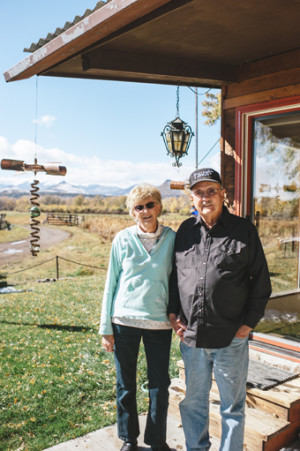
Suzie and her husband Gordon live on a large ranch east of Del Norte where their son now runs the family cattle business. The Off family first settled in the area in 1874 on a five-mile-long island surrounded by the Rio Grande River. Suzie’s family settled in 1898 on the opposite side of Del Norte. Her family, like the Offs, homesteaded to earn their land. The ranch is now a large producer of beef with nearly 200 head; the Offs grow their own hay for cattle feed.
While driving through Del Norte, it’s hard to miss the numerous photovoltaic solar arrays on public property. Interim mayor Marty Asplan explained the town’s power purchase agreement with Xcel Energy and Clear Energy. The $1 million worth of solar arrays, installed in 2011 and funded by Clear Energy, sells power to Xcel for energy credit. The savings won’t return back to the city in the near future, but after 20 years the city will own the solar equipment, and its production, outright.
Asplan said there was another reason the town decided on solar, to have a backup power source. Electricity to the San Luis Valley comes by only two sets of power lines, Asplan explained, and both travel over Poncha Pass. With the frequency of wildfires in recent years and beetle kill predicted to only increase those numbers, fire damage to power lines is plausible. Asplan said it would only be a matter of days without power before the entire Valley would be in a state of crisis, and it would likely be months before lines could be replaced. Thus, he explained, the reason the city passed the power purchase agreement was equal parts economics, carbon reduction and disaster planning.
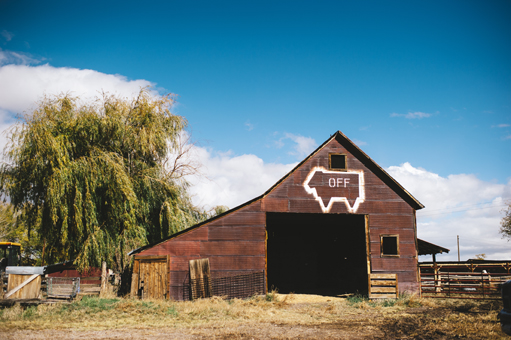
Last summer’s South Fork Fire did not directly affect Del Norte, but smoke and evacuees blew into the city. Tourism was down, with roads closed west of South Fork. Del Norte is a growing mountain biking destination with five miles of trails built last fall at the Stone Quarry area, and plans to double or triple the amount of trails. With Wolf Creek Ski Area just 34 miles away and rock climbing in Penitente Canyon, it has plenty of unique recreation opportunities, not to mention snowmobiling, hiking, fishing, hunting and camping. Del Norte has a variety of local restaurants including Three Barrels Brewery, the Organic Peddler and Peace of Art Café, and Boogies.
Links of interest:
www.museumtrail.org/RioGrandeCountyMuseum.asp

